1…2…3……43 !
Lifeline Through the Sky – Ladakh 1962
By J Thomas
Around 1960 Sqn Ldr Chandan Singh was a flight commander in 43 and he opened up valley routes for operation to Kargil, Leh, Thoise, Fukche and Chushul airstrips and to many DZs. Soon after, the C-119G Packets operated in strength and the AN-12s entered the scene. Fukche and Chushul were handed over to the Packets while Leh and Chushul became the mainstay of the AN-12s. In 1962 43 squadron operated to Kargil , Leh and Thoise airstrips and to Sultan Chushku DZ. Except for Leh, we were the only fixed wing operators to these places. In winter, Zoji La was snowed under and the whole of Ladakh was purely air maintained. Thoise and Sultan Chushku were air maintained even in summer. Our squadron offices were in tents and so was living accommodation in Jammu.
Kargil today. The airstrip is on the plateau in the background
AN-32 at Kargil. In 1962 it was a plain dirt strip.
Dakota taking off from Kargil
In mid-July we had the Galwan incident which increased tensions in the sector. On 08 Sep 62 the Chinese attacked at Dhola post in NEFA. Three aircraft of 43 sqn were sent to Jorhat to augment 49 sqn effort. 49 sqn had Dakota Mk III with a single speed supercharger whereas 43 had Mk IVs with a two speed supercharger. The high speed supercharger enabled higher power above 11,000 feet and resulted in better performance at high altitude. The 3 aircraft of 43 sqn were intensively employed in the Kameng sector of NEFA.
Wg Cdr DM Oak, my battalion commander in NDA, commanded the squadron in early 1962. He was posted out without a replacement and Sqn Ldr JS Gill, the Navigation Leader officiated during the war. Sqn Ldr A Chakravarti was the flight commander and ran the operations.
HAL personnel manned the first line servicing and they did a tremendous job. 2nd line servicing was at Agra and 4th line at Barrackpore, all with HAL. Flt Lt CK Subramanian was the Eng Offr.
During the war, 43 squadron flew much more than in normal times. Experienced crew had been pulled out to fly the AN-12s, IL-14s and Packets. We operated accident free in 1962. Considering the inexperienced crew, this was a major achievement.
AN-32 and IL-76 at Thoise. In 1962 it was a gravel strip fit only for Dakotas and helicopters
I was sent to Leh for ATC duties for the first fortnight of Sept 62. Thanks to bad weather on the day I was due to be relieved, I stayed for another fortnight. I was able to fly to a number of helipads in the Mi-4s of 107 Helicopter Unit. Standing on the ladder behind the co-pilot in the bone shaker that was the Mi-4 was quite an experience.
Dakota of 43 squadron at Leh
20 Oct 62 was a bright sunny day. I was co-pilot to Fg Offr Kaura. We did not have a navigator and Fg Offr Kaura said I would not know the way to Sultan Chushku. I took a bet that I would navigate there without looking at the map. Rs 100 and the prestige of the large gang of Pilot Officers in the crew room was at stake. As usual we took off at dawn. During the climb Kaura handed over controls to me. I gave the controls back to him over Sultan Chushku. Not a word exchanged. Hand signals all the way. But everything changed during the drop. Sqn Ldr Chandan Singh, now flying AN-12s, was fired upon near Chushul. He reported the Chinese attack. Operations Control recalled all aircraft. We completed the drop and only then returned.
The balloon was up. We were not at all surprised but it turned out that the higher ups in Delhi were in shock. It took a day for the Army to mobilize additional troops. From 22 October onwards we airlifted troops. The first batch were wooden faced Gurkhas shod in Bata Hunter shoes. Not even tents for them, just bivouacs. They obviously knew what they were in for. Subsequently, we airlifted tents, rations and building materials. Casualties during the war were mainly due to frostbite.
We had one aircraft IJ392 where the heaters did not work. We normally kept it for local training flying. During the hostilities it was pressed into service to the forward areas. I (foolishly ?) volunteered to fly in this and got an unforgettable experience.
On 06 Nov 62 I was co-pilot to Flt Lt Chengappa when we did an ammunition drop at Murgo. The DZ was in a narrow valley at an elevation of 14,000 feet where the Dakota is gasping for air. The circuit consisted of maximum rate steep turns. The good ole Dakota never let us down. The Army ejection crew got frozen stiff in the cold blast from the open door. As soon as the drop was over, we brought them into the warm crew cabin. Exhausted, they gradually recovered after breathing oxygen from the portable bottles.
Plt Offr Amarjit Singh Hunjan directing traffic at Thoise airstrip
We flew on all days, weather permitting. 28 October was Diwali and we celebrated it by watching the twin navigation lights of IL-14s taking off in the pre-dawn darkness. Air Cmde Ananthanarayanan was AOC J&K . He passed an order that all aircrew were to be given a weekly off. Our CO and Flt Cdr ensured this was done. But hey ! There was a war on and our sister squadron, 42, on the other side of the runway was short of pilots. On our days off, we slipped into the 42 sqn bus instead of our own. Never mind that we were not qualified on the Ilyushin-14.
My November 1962 flying occupies 4 pages of my log book for a total of 127 hours.
My log book page (left side) for Oct 19-31, 1962
My log book page (right side) for Oct 19-31, 1962
World’s highest airstrip. C-130 lands at Daulat Beg Oldi – 2013. The first landing at DBO was in August 1962 by a Jet Packet flown by Sqn Ldr CKS Raje, Flt Lt J Philipose and WO Yadav
During the war one of our aircraft went unserviceable at Kargil and an HAL party camped there to change the engine. When the aircraft was ready a crew had to be sent to retrieve the ac. Instead of sending the crew by the first wave of flights, the CO & Flt Cdr decided to send them by the 3rd wave. You guessed it. The weather packed up and they couldn’t go. This went on for several days. To be fair to the leadership, crew were short and they were utilising the crew for the first wave and sending them for the ferry in the 3rd wave. However, Ops Command and Air HQ looked at it differently and relieved the CO of command. Wg Cdr HS Dhillon came as replacement but after the war was over.
During the war, the squadron moved to Jammu without missing any forward area flying. After the cease fire, the tempo of flying remained high. Building materials and rations were the main cargo. We spent so much time airborne that I felt I was a bird.
43 was the only fixed wing squadron operating to Kargil and Thoise. The road through Zoji La was closed in winter. And there was no road between Leh and Thoise. So, for the Army personnel in these two sectors, 43 was truly their “Nabhsa Jeevan Dhara” [Lifeline Through the Sky].
Wg Cdr Joseph Thomas, VM is an aeronautical engineer and test pilot. He has flown over 6000 hrs on 30 different aircraft. He has commanded a strategic reconnaissance squadron and founded the IAF Test Pilots School.
|
- BATTLE OF CHUSHUL 1842 It’s interesting that the Chushul operations of 1962 (which included the Battle of Rezang La) took place in the same area as the Dogra Tibetan Battle of Chushul of 1842. The Dogra army under Gen Zorawar Singh had advanced right upto Mayum La in 1841. They were halted in Dec 1841 and Gen Zorawar Singh himself was killed in battle. Subsequently, the Tibetans advanced westward all the way to Leh. They laid siege to Leh for six weeks but retreated when news arrived of a Dogra relief force that was marching towards Leh. The Tibetans retreated along the Indus and then to the Pangong Lake area. Both armies set up camp near Chushul, the Dogras being on higher ground. A battle was fought, possibly on the site of the present airstrip. The Tibetans were driven back to their camp and the fighting continued for about ten days. The Dogras dammed a small stream that flows into Pangong Lake. When it was full they released the water at night, thus flooding the Tibetan camp. The Tibetans surrendered. The Treaty of 1842 was eventually signed between the Dogras and Tibet.
|

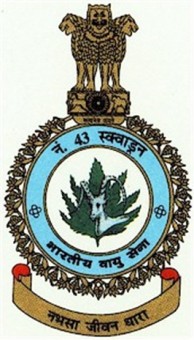

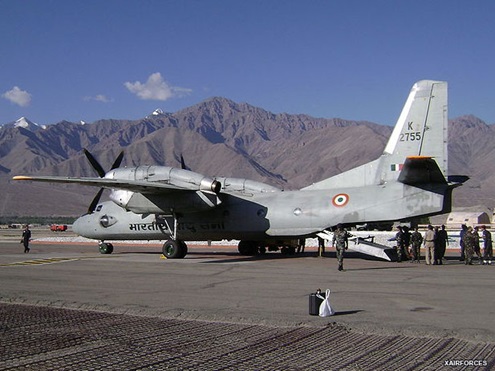
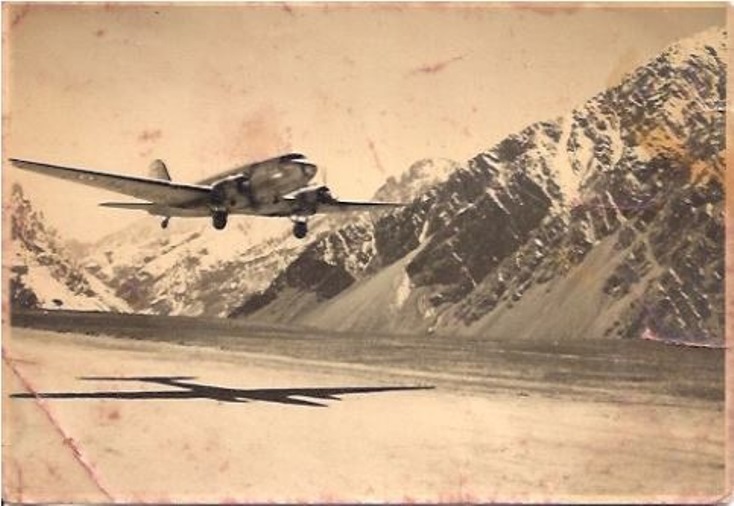

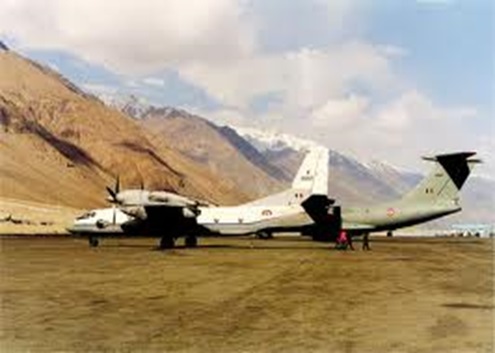

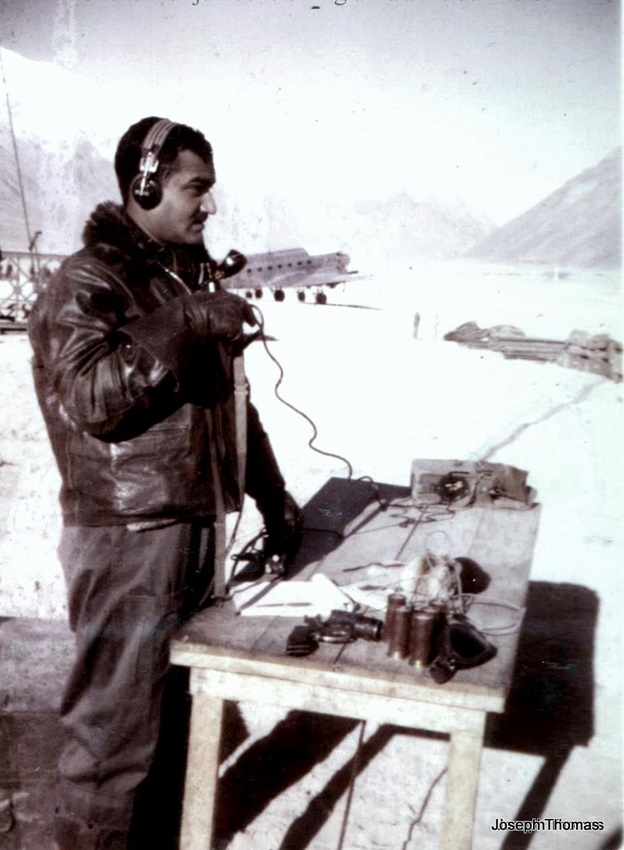


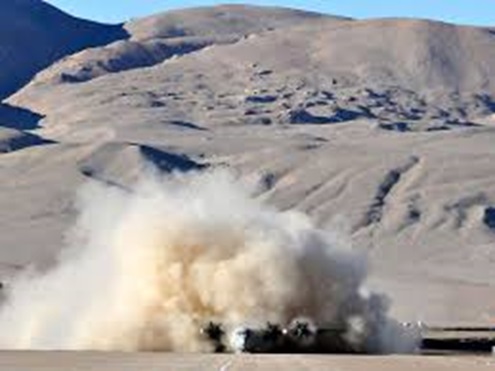
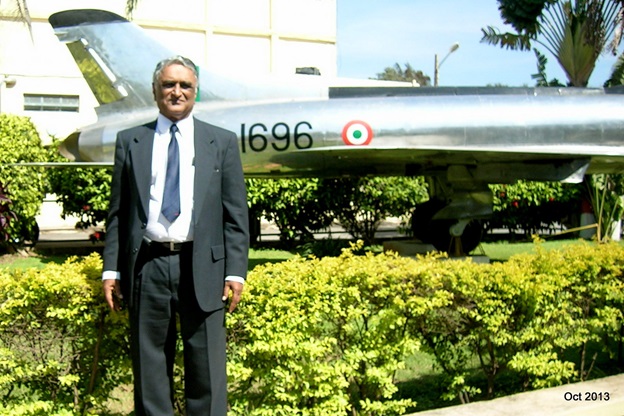




Long live the Gooney Bird !!
Great. My first posting too was in 43Sq – Apr64
Tommy Sir, I was delighted to read the article put forth by you. Beautifully narrated.
I still have to see the pictures of the airstrips. I joined the sqdn in 1964 December. I think you were on your way to Agra for Canberra conversion. Met you briefly then.
Like you mentioned the areas and routes remained same for us to operate upon.
I felt like I was in Time Machine going back to good old days of 43 Squadron.
Amazing aircraft. What memories— J&K–From Srinagar and Jammu and East — From Jorhat and Mohanbari. It was a great learning graph flying these aircraft in difficult terrain and different kinds of weather with minimal navigational aid. Glory be thy name!!!
Hello Sri Joseph Thomas, I read your above article just today. You may remember me. I came to 43 as a volunteer from Indian Airlines in early 1963 and left at the end of 1965 when my tenure finished.
Your article was very interesting as it was the earlier period of 43 sqn, During my stay we have done a few flights together.
In Dec 2017 43 sqn celebrated the 50th year jubilee of their move to Jorhat. By chance someone from Bengalore remembered that I was in 43 and informed them. I received an invitation from them and attended the function. It was very nostalgic for me to be able to visit my old and only squadron once more at my age. I was treated extremely well and enjoyed the visit. I was the only person from our old J & K unit and the oldest present.
You may remember about the only Dakota that survived an engine failure in Ladakh region and I happened to be the Captain. Bachu Prasad was the co pilot and Advani was the navigator. Sgt Swaminathan was the signaller. Aircraft was HJ 922 and the date I think was 12th March 1964. I have to recheck. The biggest co incidence was that this aircraft has also survived all these years and was done up and installed as a show piece on the grounds of IAF school. That aircraft has a history now known by the school and the squadron.
God bless you all.
With regards. From Capt B S and Smt Gopal. (Retired Director Air Safety from Air India).
Thanks Gopal. Good to hear from you. How can anyone forget you ? “I have no comments to make !”
I did hear about the squadron celebrating “50 years of the move to Jorhat.” Surprising that they seem to have forgotten the earlier history. Air Mshl Viren Puri forwarded my article to them.
12 squadron opened up the air link to Ladakh, starting in 1948. Then 43 took over and did a tremendous job from 1959 onwards. We were the only airlink to Kargil and Thoise. In winter, we were the only link, ground or air. Even now, I look back to the hot tea served at Kargil as the best drink I’ve ever had.
Best wishes and look forward to meeting up with you.
Great narration Tommy and it has revived memories of the best flying I did in the service. Strange how I missed this in all this while since I do stay in touch with Air Force stories. Thank you for taking me back in time. Neither that time or that kind of flying will ever return. I was privileged to have experienced it.
Bachu
[...] – See more at: http://amolak.in/web/lifeline-through-the-sky-ladakh-1962-by-wg-cdr-j-thomasvm/#sthash.aZNevZZM.dpuf [...]
We grew up listening to the stories from the person in the sixth picture We still have the photo with the Dakota wing. I will share this. Thanks!
We still have the photo with the Dakota wing. I will share this. Thanks!
Thanks Dipali. Say Hi from me to your Dad.
Dear Tommy,
Impressed , one more time, by your knowledge of history, old and recent ,
as also your vivid recall of detail . It was nostalgic to go back 52 years with
these fond memories of our formative years in our very first Squadron .
Thank you . I take the liberty with a minor correction to a very fine narrative
of Oct 1962 . It was a detachment of two Daks that left Sri for Gauhati with
MP Singh/ self and PR Singh / VPS Gil , on 3 Oct . True to the Service tradition
we were treated as step children during our stay there. Late F/L PR SINGH fell foul with the local bosses and was soon sent back all the way by train . We put in a lot of effort for next three weeks till we were sent back as Pax by servive air , as they retained our A/C .
As I open my log book I notice that our very last effort together was on 18/19 Feb64 searching for BL 559 , which went missing flying from Sri to Jammu with S/L Kanitkar in command . Soon after that both of us were sent off to PTS for conversion to the Packet . I made my escape to ARC and you went on to
win many laurels in the mainstream Air Force .
Regards…………………………………………………… PPS
Thanks PPS. Sorry for the late response. I did not get any intimation from the website about your post — is supposed to be automatic. I now visited the site after a Facebook post about our Thoise friend, Col SS Randhawa.
Thanks for filling in the details about your two aircraft detachment to Gauhati. However, I am positive that Flt Lt Rajagopalan also captained an aircraft on detachment to the Eastern sector. Not sure whether he went to Gauhati or Jorhat. But he did tell me stories of how they had dropped so much at Tsangdhar (?) that the DZ became white with parachutes.
Yes I remember the tragedy of S/L Kanitkar. Also your narrow escape earlier in the day of that accident. S/L Kanitkar was with us at lunch and he said “If the Dakota can’t go and the Packet can’t go, how can I go ?” Nevertheless he tried and probably got into a CB. Among his passengers was Maj Gen Grewal, father of my course mate. S/L Kanitkar’s wreckage was found years later.
Hope you and family are well.
Part of the H-B report is available at http://www.indiandefencereview.com/wp-content/uploads/2014/03/TopSecretdocuments2.pdf
The 1962 war was the baptism by fire for our course. HC Gujral won the VrC in the Daulat Beg Oldi sector of Ladakh. But many fine young men lost their lives, mosty in NEFA.
The recent online publication of a section of the Henderson-Brooks report has thrown new light on a number of happenings. A few preliminary remarks :
Army HQ knew that the Dhola post was north of the MacMahon Line. But somebody redrew the map to make the Mac Line conform to the crest line (also called the watershed.) Redrawing the map — or correcting errors — needs to be a bilateral affair. Why we did this unilaterally is an enduring mystery.
Army HQ knew that Tsangle post was in Bhutan. Why we persisted with maintaining a post there, in spite of Bhutanese protests, is not known. In the event, the Chinese did not attack Tsangle.
More about the India – Tibet – China border in my article http://amolak.in/web/sino-indian-border-the-way-forward-by-j-thomas/
Prime Minister Nehru made an astounding public statement on 12 Oct 62 that he had appointed a top general to command forces in NEFA and that he had authorised the Army to “throw out the Chinese.” It is well known that PM Nehru was prone to make off the cuff remarks. But the H-B report brings out that “throwing out the Chinese” was official government policy. It is surprising that Army HQ used such language in official correspondence. Our POWs reported that the Chinese were particularly incensed by these words. They said that even the Americans had not used such language during the Korean war.
It turns out that the Times of India of 27 Oct 62 had a similar news item. They were presumably briefed by Gen Kaul. It amounted to a declaration of war against China. We, the junior officers in the field, were taken aback by Nehru’s statement. We understood what it meant. Amazing that the senior officers in Delhi took it lightly.
To this day we accuse the Chinese of “perfidy” in attacking us. Not only did we declare war, we went further and actually mounted an operation to evict the Chinese from disputed territory in the vicinity of Dhola post. The H-B report compares this to the Charge of the Light Brigade.
The Intelligence Bureau made an assessment that the Chinese would quietly withdraw if we “show the flag” in disputed territory. Considering that the PLA was a battle hardened force, this was sheer fantasy. Army Intelligence differed with this assessment but did not press their view. The IB assessment became official policy and the entire war was fought on the basis of this fantasy.
XXXIII Corps in the east (and XV Corps in the North) disagreed with the above assessment. Army HQ solution was to sideline XXXIII Corps and form a new Corps based at Tezpur. Orders were issued on 04 Oct 62, Gen. Kaul took over as Corps Commander on the same day and the rest is history.
Fortunately, XV Corps in J&K was not sidelined. (The H-B report does not even mention XV Corps.) Our forces in Ladakh held the Chinese and it is only recently that we have started taking credit for this. But no good deed goes unpunished. Gen Verma, GOC XV Corps was sidelined and retired. He even had difficulty and delay in getting his pension.
The second key person in Ladakh was Maj Gen Grewal. As a brigadier he commanded 114 Inf Bde with HQ in Leh and responsibility for the whole of Ladakh, except Kargil. He had experience of high altitude operations in the North West Frontier Province. He personally visited every post in Ladakh, often trekking on foot. In October 1962 he moved out on promotion. When the war started, he was recalled to Ladakh and appointed GOC of a newly inducted division. Brig TN Raina (later COAS) was his successor as 114 Inf Bde commander. Gen Grewal gave him all the credit and got him an MVC. Gen Grewal tragically died in 1964 in an air accident.
IAF took part in the war by way of reconnaissance and transport support. 43 squadron was one of the IAF units that operated in Ladakh. We also sent a three aircraft detachment to Jorhat to supplement the efforts there. A major effort was air dropping at Tsangdhar, which is mentioned in the H-B report. My colleague reported that the DZ became white with parachutes. Alas, to no avail. More on 43 squadron in Ladakh 1962 at http://amolak.in/web/lifeline-through-the-sky-ladakh-1962-by-wg-cdr-j-thomasvm/
We suffered 3000 dead in the 1962 war. May their souls rest in peace !
A fighter pilot’s perspective of landing in Leh in 1984 (by which time Leh had a pucca runway).
http://jpjopenpage.blogspot.ca/2009/07/from-my-log-book-sanitised-glimpse.html
Dear Thomas Sir,
It was wonderful going down memory lane as I flew to most of these airfields from 1964 tillabout 1978 with a border violation to Thoise and a subsequent inquiry at Kargil,only to be exonerated by Air Maeshal Moolgaonker (C-in-C WAC).Had the opportunity of going to the ‘Hot Springs’ near Fuckche.You were my SCC in NDA.
GSBhalla
Thanks GS. Hope you and family are doing well.
Dramatic life-risking acrobatics with the sole objective of saving the innocent civilians who, in those days, look up the horizon to enjoy the fun of an “aeroplane” roaring past over the sky with no provisions to hold on!!! Only, of late, the present day youth with advanced technical know-how, are able to gauge the risks those clinging inside the “machines” are ever subjected to. But, people today have turned bolder. Even teen-aged girls pine for a pilot’s career !
Long Live our Armed Forces.
SNNarayanan
Yes, today the female homo sapiens has overtaken the male of the species.
Great record keeping and a wonderful piece on 62 war in Kashmir area.
Your boxed piece is piece of history that very few know today. A good reminder.
Army has never forgotten the great deeds done by Air Force to keep them going.
The best,
Dave Sood
Thanks Dave. The Dogra – Tibetan treaty of 1842 is the latest boundary agreement for the region. However, no map was drawn. Instead, the traditional boundary was re-affirmed. Thanks to modern technology, both sides have established their administration right unto the border. We now need to physically demarcate the border. Thanks to aerial and satellite photography, this task is much easier than in the old days when surveyors had to physically traverse the terrain.
Hi Tommy,
You made my day, reading your account of 1962 flying with 43 SQN gave
me goose pimples. Unfortunately I could not take part in the 62OPS as
I was part of the 5 crews sent to Sescinskaya USSR for AN12 conversion
course. Joined 44 sqn Feb 63,intensive 4 Sorties a day to Ladakh thereafter.
The Daks, Packets, IL 14, AN12s for some time C-130S build up Ladakh.
Flying the AN12 after stints in Daks 11 SQN, IL14 42 sqn , made me appreciate the effort of DAK, IL14 crews as it was much tougher. The only time I went to Kargil was in a 43 Dak , in 1961 flown by F/L Mendana. I was back to Daks 49 SQN IN 1969 in Jorhat commanded by Gp Capt Chandan Singh VRc, later MVC, was privliged to take part in the Tangail para drop flying with my CO Wg Cdr Manish Rudra, then F/O AK Singh later Air Mshl.
Air Mshl Bharat Kumar has chronicled in his book about the tpt ops of the IAF the unknown and the unsung.
My IAF salute to you and all veteran air warriors
JAI HIND
Gautam
Dear Thomas,
Yesterday I read your article of your experiences in 43 Sqn. It revived memories of our flying in the J&K. As you know we were together in the same Sqn during 1962. As per your Log Book entries we flew together twice.
I am in regular touch with 43 Sqn & I plan to forward your article so that they can maintain that in their Sqn History. It would also be an inspiration for youngsters to follow.
We are based in Delhi, enjoying the bitter cold these days.
Warm Regards
Puri
My dear Tommy,
I was not able to open the Forward through Lofty’s mail. Thank you for the vivid description and the clarity with which you have handled a much difficult subject. Difficult, because there was no National Aim. Air Maintenance and Air Transported Operations, we are talking about a task where there was lot more ingenuity and over indulgence needed to handle the aircraft at heights where they were not intended by the manufacturers. Likes of Lalu Grewal, Chandan Singh saw this as an opportunity to use the aircraft and their much talented Crews to exploit both the Men and Machine to meet their tasks and the requirements. Tommy Thank you for putting across your views diligently with your gentleness of pen. Great. Love. HMS.
Well,well ,nicely written. I was there in1961 to 1964.
Thank you sir
All factual and true. Well written, Tommy. How are you? Best wises to you and your family.
- Bosco
Sir, we feel proud of fighters like you. As we say, Service Before Self.
An ex-NDA, retiree now, can only salute you.
Best wishes for 2014. Warm regards, Prabir
Thanks Prabir. NDA is a world class institution and India’s best university.
Best wishes for 2014.
Sir Air Marshal Viren Puri, who was there with you, wants to get in touch with you. His email id is virenpuri@airtelmail.in
You may like to get in touch with him.
Very happy for both of you.
With regards, Prabir
A very well recorded piece, as usual.
In my view, the Army over shadows the Air Force when recording the events in the war. Air power plays a very important part, but at the end of the day the Army walks away with the awards. As far as I know, there has been only ONE PVC awarded to the Air Force since our independence.
We need to record more such stories for the posterity. Air Force is often the last choice whilst joining the NDA.
Thanks, Thomas.
Surjit
Surjit,
As you can see from my previous comment, I don’t grudge the Army the awards you get. I think there is some quota system for the mid and lower level awards. I know of many people who deserved awards and did not get them. And vice versa.
Surprising that Air Force is the last choice of NDA cadets. I think it is due to the lack of an exit policy in the air force. As per the Peter Principle, which applies to all large organisations, the top 5 % and the bottom 5 % don’t get promoted. So we have the mid percentile reaching the top in all large organisations. Recently, we had a retired Air Officer Personnel proclaiming that “average is best.” No quarrel with that because it is just a fact of life. But the air force retains the people it does not promote. As a result, there are a large number of passengers. A pity because the air force could easily be the first choice.
A fascinating account of the ’62 ops sir. I salute you and your brave colleagues of 43 Sqn for the enormous task executed by all of you during those difficult times. Having visited most of the places mentioned as recently as 2009 I can visualise the daunting prospects of having to fly in and out of those inhospitable areas durng the war. With best wishes.
Truth to tell, it wasn’t daunting. Today you would call it adventure sports. It was interesting flying through the valleys. We didn’t have enough power to climb above the hills. There were strict rules on minimum heights to be maintained on each leg. And we had to keep to the right of each valley so as not to conflict with returning traffic. But nobody laid down restrictions on how far to the right one could fly. So it was often a thrill to fly as close to the hill on the right as possible.
Sometimes, when there were clouds, we had the unique experience of flying through a “tunnel” — the ground beneath, hills on either side and the clouds above.
The other interesting part was that it was a race to finish the day’s task. As soon as the briefing was over, the co-pilot would rush out to the aircraft, do the checks and start the engines. Meanwhile the other crew members would do their respective tasks. The captain would come in and quickly taxi out. In the air also it was a race. We did learn how to squeeze out the last bit of performance out of the aircraft and to use up currents. But, when Wg Cdr HS Dhillon took over command, he put a stop to this. He decreed that he would be the first to taxi out and nobody dared to overtake him.
And the government actually paid us for these adventure sports.
Our sympathies were always with our Army colleagues who were posted in remote posts. When the war started, reinforcements were airlifted and the sole brigade at Leh was augmented to form a division. The hastily mobilised jawans were shod in Bata “Hunter” canvas boots and had to shelter in bivouacs. No wonder that there were heavy casualties due to frostbite.
Very happy to go through the accounts of 1962 when I was just 13 years.
Happy and prosperous new year tou and looking forward to read more of such incidences in the future
Thanks Srinivas. 1962 was a turning point in our history. Even though we suffered reverses in the North East, we held our ground in Ladakh. Surprisingly, we have never taken credit for this.
The 1962 war compelled us to expand the Army and the Air Force. As a result, we were able to defend Kashmir when Pakistan attacked in 1965.
Wish you and family a happy new year
Dear JT,
Thank you for the fascinating account of 62 that you have recorded.
Wish you and yur family a very happy 2014.
Warm regards.
Vivek Bopiah
Thanks Vivek. Wish you and family all the best in 2014
Hello Thomas, wishing you and your family A HAPPY NEW YEAR. We learn about you from Surjit, often. He has so much regard for you. I remember you since we spent so much time together at Jamnagar.
Wishing you all the best in the future too. Regards. MANJIT Singh.
Hello Thomas, wishing you and your family A HAPPY NEW YEAR. We learn about you from Surjit, often. He has so much regard for you. I remember you since we spent so much time together at Jamnagar.
Wishing you all the best in the future too. Regards. MANJIT Singh.
Thank you sir. Wishing you and family all the best in 2014.